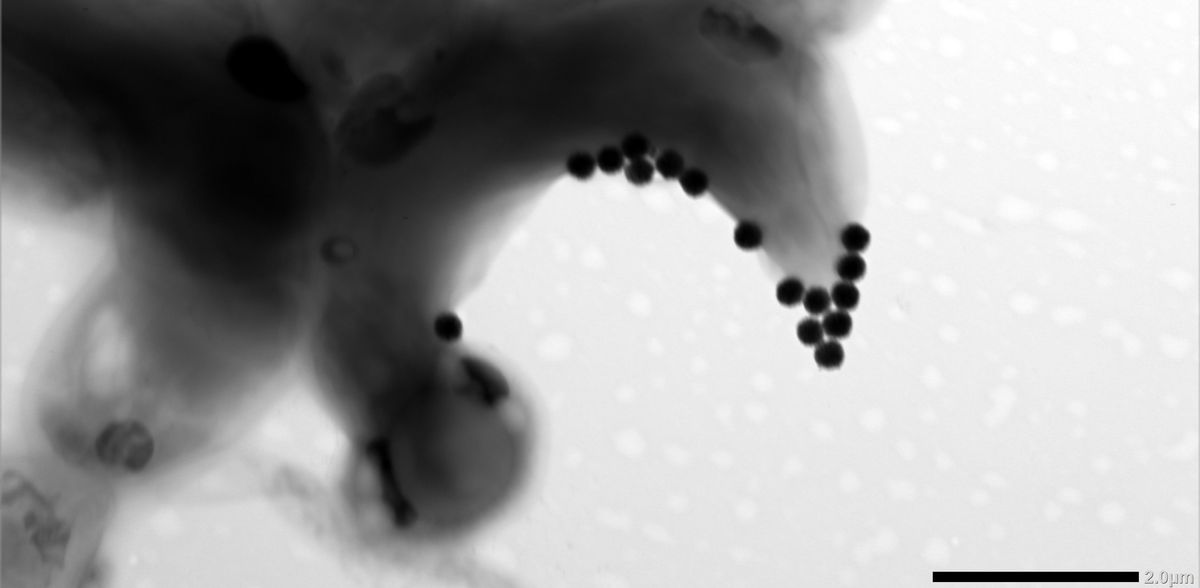Assessing the toxicity of micro- and nanoplastics to ecosystems
Smaller is not necessarily less toxic
For most pollutants, there are standard protocols for assessing the risks to ecosystems. Despite the increasing concern about the harmful effects of micro- and nanoplastics (MNPs), so far, there exist no harmonised guidelines for testing the ecotoxicity of MNPs. An international research team with IGB has now developed protocols to assess the toxicity of these substances in soil and aquatic ecosystems.
Ecotoxicity studies are usually conducted according to established protocols using exposure tests, in which organisms are exposed to different substances under conditions that mimick those in the environment as realistically as possible.
Shortcomings of previous assessment methods
Previous ecotoxicity studies of micro- and nanoplastics have used commercially available spherical particles as models for MNPs, but in nature plastic particles occur in variable shapes, sizes and chemical compositions. "Each of these properties can influence their dynamic behaviour and toxicology and should be taken into account when conducting ecotoxicological experiments to assess their risk," said Fazel A. Monikh, lead author of the study and currently a scientist at IGB in Neuglobsow.
Moreover, protocols developed for chemicals that dissolve or form stable dispersions are currently used for assessing the ecotoxicity of MNPs. Plastic particles, however, do not dissolve and also show a dynamic behaviour in the liquid in which they float.
Research protocol considers the specific properties of MNPs
In the journal Nature Protocols, the researchers describe exposure protocols for soil and aquatic ecosystems that consider the particle-specific properties of MNPs and their dynamic behaviour in exposure systems. They also present a method for artificially generating more standardized micro- and nanoparticles for experiments. The protocol has been developed for toxicity testing of MNPs under controlled conditions (i.e. in the lab or in meso- or macrocosms) and is not suitable for monitoring under field conditions.
"The new protocol is an important basis for researchers in ecotoxicology to understand the dose-response relationships after exposure of organisms to MNPs; but also for industry to develop safer plastics and to perform toxicity tests on plastics and to meet regulatory requirements," said Fazel A. Monikh when listing numerous intended applications.
Smaller is not necessarily less toxic
The protocols also consider the differences between micro- and nanoplastics. Nanoplastics are similar in size and shape to large proteins. They therefore behave differently from their microplastic counterparts and may be able to penetrate cells. In addition, a greater proportion of the molecules in nanoplastics are attached to the surface of particles, which can increase interactions with cellular components. "It thus is important to consider the differences between microplastics and nanoplastics when conducting toxicity tests with these particles," said Hans Peter Grossart, IGB researcher and co-author of the study.
Original publication
Fazel Abdolahpur Monikh, Anders Baun, Nanna B. Hartmann, Raine Kortet, Jarkko Akkanen, Jae-Seong Lee, Huahong Shi, Elma Lahive, Emilia Uurasjärvi, Nathalie Tufenkji, Korinna Altmann, Yosri Wiesner, Hans-Peter Grossart, Willie Peijnenburg, Jussi V. K. Kukkonen; "Exposure protocol for ecotoxicity testing of microplastics and nanoplastics"; Nature Protocols, 2023-10-10
Most read news
Original publication
Fazel Abdolahpur Monikh, Anders Baun, Nanna B. Hartmann, Raine Kortet, Jarkko Akkanen, Jae-Seong Lee, Huahong Shi, Elma Lahive, Emilia Uurasjärvi, Nathalie Tufenkji, Korinna Altmann, Yosri Wiesner, Hans-Peter Grossart, Willie Peijnenburg, Jussi V. K. Kukkonen; "Exposure protocol for ecotoxicity testing of microplastics and nanoplastics"; Nature Protocols, 2023-10-10
Topics
Organizations
Other news from the department science
These products might interest you

NANOPHOX CS by Sympatec
Particle size analysis in the nano range: Analyzing high concentrations with ease
Reliable results without time-consuming sample preparation

Eclipse by Wyatt Technology
FFF-MALS system for separation and characterization of macromolecules and nanoparticles
The latest and most innovative FFF system designed for highest usability, robustness and data quality

DynaPro Plate Reader III by Wyatt Technology
Screening of biopharmaceuticals and proteins with high-throughput dynamic light scattering (DLS)
Efficiently characterize your sample quality and stability from lead discovery to quality control

Get the chemical industry in your inbox
By submitting this form you agree that LUMITOS AG will send you the newsletter(s) selected above by email. Your data will not be passed on to third parties. Your data will be stored and processed in accordance with our data protection regulations. LUMITOS may contact you by email for the purpose of advertising or market and opinion surveys. You can revoke your consent at any time without giving reasons to LUMITOS AG, Ernst-Augustin-Str. 2, 12489 Berlin, Germany or by e-mail at revoke@lumitos.com with effect for the future. In addition, each email contains a link to unsubscribe from the corresponding newsletter.
Most read news
More news from our other portals
Last viewed contents
Hypolipidemic_agent
Bisphenol_A
Greenstone_belt
Category:Nanotechnologists
Precious_metal
Water-cement_ratio






























































